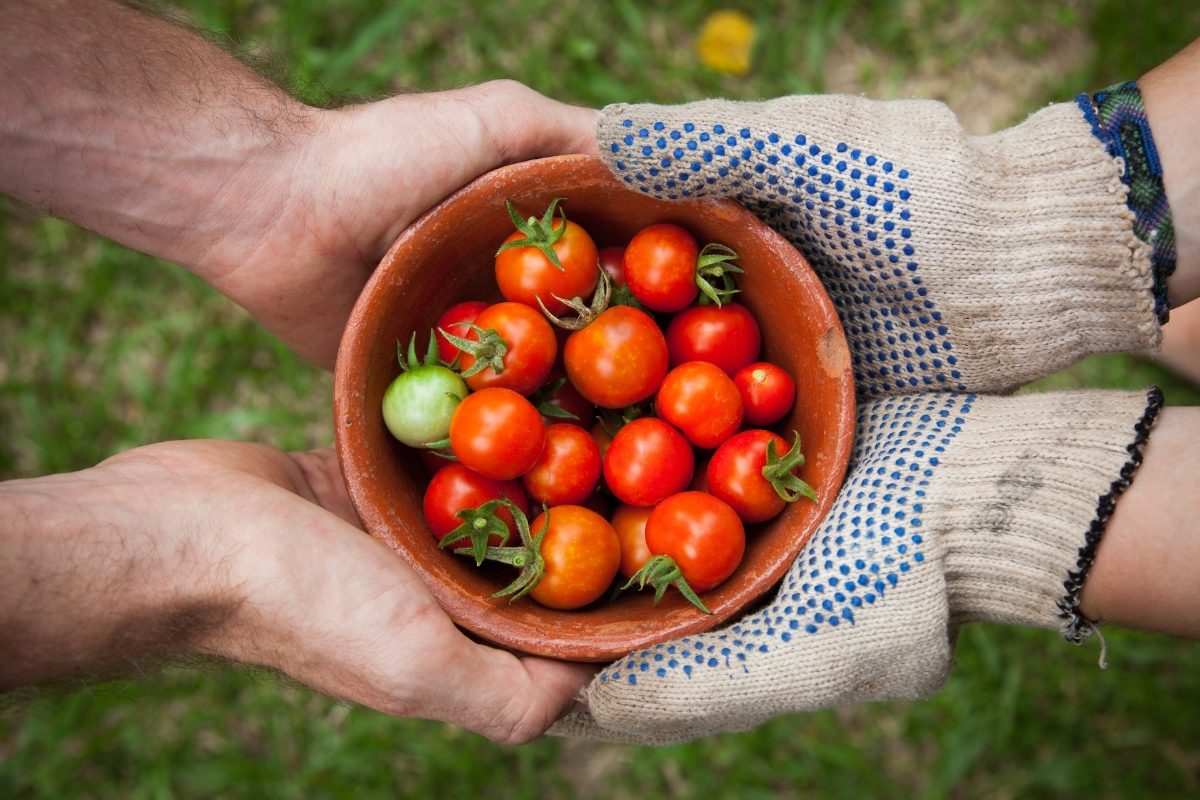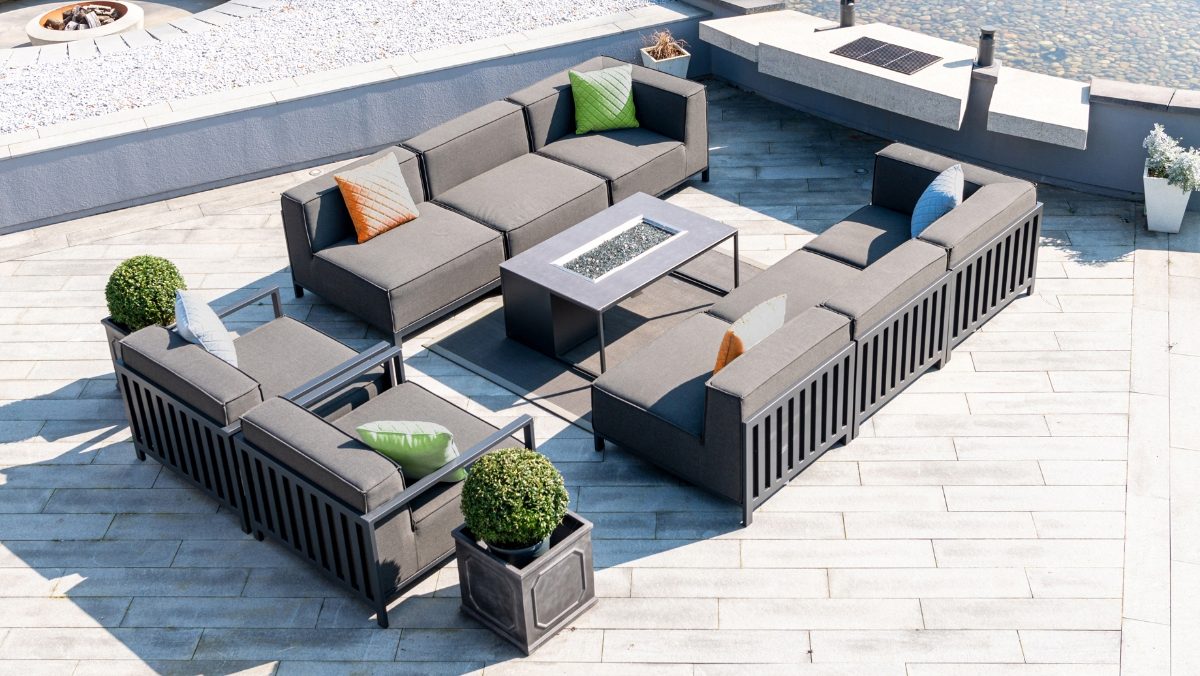Spring has Sprung!
As the weather warms up and the sun shines brighter, many of us are eager to spend more time outside. Whether you're experienced or a beginner, creating a vegetable and herb patch is a wonderful way to enhance your outdoor living space while also enjoying the many benefits of growing your own food.
In this blog, we'll provide some helpful tips and information on how to get started with your own vegetable and herb patch, as well as how to style your outdoor seating areas with Westminster Outdoor Living Furniture.
Gardening is not only a rewarding experience, but it can also be a great way to save money on groceries while improving your health. With the right tools and knowledge, even beginners can create a thriving vegetable and herb patch. We will walk you through the steps of how to start growing on your own garden and how to style your outdoor seating areas using trees and plants.
Why Grow Your Own Vegetables and Herbs?
There are many reasons why growing your own vegetables and herbs can be a rewarding experience. The Royal Horticultural Society have a lot of brilliant information on gardening for Health and Wellbeing, below are a few examples.
Fresh, Nutritious Produce:
When you grow your own vegetables and herbs, you know exactly what you're eating. You can be sure that your produce is fresh, free of harmful chemicals, and packed with nutrients.
Cost Savings:
Growing your own vegetables and herbs can also save you money in the long run. While there may be some initial costs involved in setting up, the ongoing cost of purchasing produce from the grocery store can add up over time.
Environmental Benefits:
By growing your own food, you're also reducing your carbon footprint. You won't have to rely on produce that has been shipped from faraway places, which means less fuel and energy consumption.
Stress Relief:
Gardening has been shown to have many mental health benefits, including helping to reduce stress and anxiety. Spending time outside with your hands dirty, can be a great way to relax and unwind after a long day. Thrive have videos, journals and so much more information, with contacts for regional projects and courses you can get involved with.

Getting Started with Your Vegetable and Herb Patch
Now that you know some of the benefits of growing your own vegetables and herbs, let's talk about how to get started on your own.
Step 1: Choose the Right Location
The first step in creating a vegetable and herb patch is to choose the right location. Find an area in your garden that gets plenty of sunlight, has good drainage, and is easily accessible. Avoid areas with too much shade or that are prone to flooding, keep in mind that vegetables and herbs need at least six hours of direct sunlight each day to grow properly. Now that you've found the right location, it's time to map things out.
Step 2: Plan Your Vegetable Patch
It’s time to plan your garden! Consider the types of vegetables and herbs you want to grow, how much space they'll need, and how to group them for optimal growth. If you have limited space or restricted mobility, the RHS have a whole page explaining the benefits of raised beds. Now you are organised, it’s time to get dirty!
Step 3: Prepare Your Soil
The quality of your soil is critical for success, add compost or other organic matter to improve the soil's nutrients and texture. Consider getting your soil tested to ensure it has the right pH balance for your plants. Charles Dowding has a brilliant article all about soil care. Once you know which plants will thrive you can start digging.
Step 4: Start Planting
Now it's time to start planting your vegetables and herbs. You can start with seedlings or sow seeds directly into the soil. Follow the instructions or research the for proper depth and spacing for the different seeds and seedlings. The Royal Horticultural Society have a vegetable growing library, just choose the vegetable you want to grow and they have all the information you need! Make sure you’re watering regularly, and keeping an eye out for any pests and diseases. If you're new to gardening, start with things that are easy-to-grow like lettuce, herbs, and tomatoes. These plants are forgiving and will give you a good foundation to get more advanced down the line. Then it’s just keeping up with maintenance.
Step 5: Maintain Your Garden
To keep your garden healthy, you'll need to maintain it regularly. This includes watering your plants, weeding, fertilizing, and pruning as needed. Regular maintenance will help prevent pests and diseases and ensure a bountiful harvest. Consider installing a drip irrigation system to make watering easier and more efficient, especially in a large area. If you keep up with the maintenance, you will soon be able to harvest!
Step 6: Harvest Your Vegetables and Herbs
Once your veg patch is mature, it's time to harvest your vegetables and herbs. Be sure to pick them at the right time to ensure the best flavour and quality. Some vegetables, like tomatoes and cucumbers, will continue to produce throughout the season, so be sure to check regularly. Then it’s time to enjoy!
One of the most rewarding aspects of gardening is being able to enjoy the fruits of your labour. As your veggies grow and thrive, you'll be able to harvest fresh produce that you can use in your cooking. Growing your own vegetables and herbs not only saves you money, but also provides a sense of satisfaction and accomplishment. You'll know exactly where your food comes from and can be proud of the work you put into it.

Choosing and styling your garden furniture
When it comes to styling your outdoor seating areas with garden furniture, the possibilities are endless. You can get creative with how you incorporate your furniture into your garden, using your plants and trees to create a cohesive and stylish look. Here are some tips on how to do it:
Choose Furniture that Complements Your Garden:
When selecting furniture for your outdoor seating area, choose pieces that complement your style and colour. For example, if you have a sleek and minimal design space with clean lines, choose a modern furniture, a wooden bench, or a classic weave design would suit a more rustic garden. A large dining table and chairs might be more appropriate for a larger patio area, while a smaller bistro set might be better suited for a smaller space.
Define Seating Areas with Greenery:
Use flowers, shrubs and trees to define seating areas, place potted plants strategically around your furniture, or create a beautiful meadow style bed around your seating area using colourful flowers or fragrant herbs. For example, you can create a seating area under a tree using a bench or a lounge sofa set.
Add Shade:
Add shade to your seating areas by planting trees or installing a pergola. You can also use parasols or shade sails to create shade over your furniture. Make sure to choose trees or plants that don't drop a lot of debris onto your furniture or create too much shade. Here are some ideas on how to create light and shade in your garden.
Get Creative with Your Furniture:
For example, you can create a cosy reading nook by placing a comfortable armchair under a tree, with a small side table for your book and a pot of fresh herbs for some fragrance. You can also create a vibrant dining area by using a colourful scatter cushions or adding some colourful flowers to your table centrepiece. House and Garden Magazine have some great ideas for small gardens and outdoor upholstery.
Invest in Quality Outdoor Furniture:
Investing in quality garden furniture is important, especially if you plan to spend a lot of time outdoors. Westminster Outdoor Living offers a range of stylish and durable outdoor living furniture options that are perfect for any outdoor space, whether you prefer sleek aluminium, classic weave or our fantastic fabric furniture made from the undeniably hard-wearing Sunbrella®.
Westminster furniture is made from high-quality materials that are designed to withstand the elements, so you can enjoy your furniture for years to come. Plus, our furniture is available in a variety of styles and colours, so you can find the perfect pieces to complement your outdoor design.
In conclusion, creating a vegetable and herb patch can be a rewarding experience for both aspiring and established growers. With some planning, preparation, and maintenance, you can enjoy fresh and delicious produce right from your own backyard. And by styling your outdoor seating areas with quality garden furniture and plants, you can create a stylish and inviting outdoor living space that you'll love spending time in.
